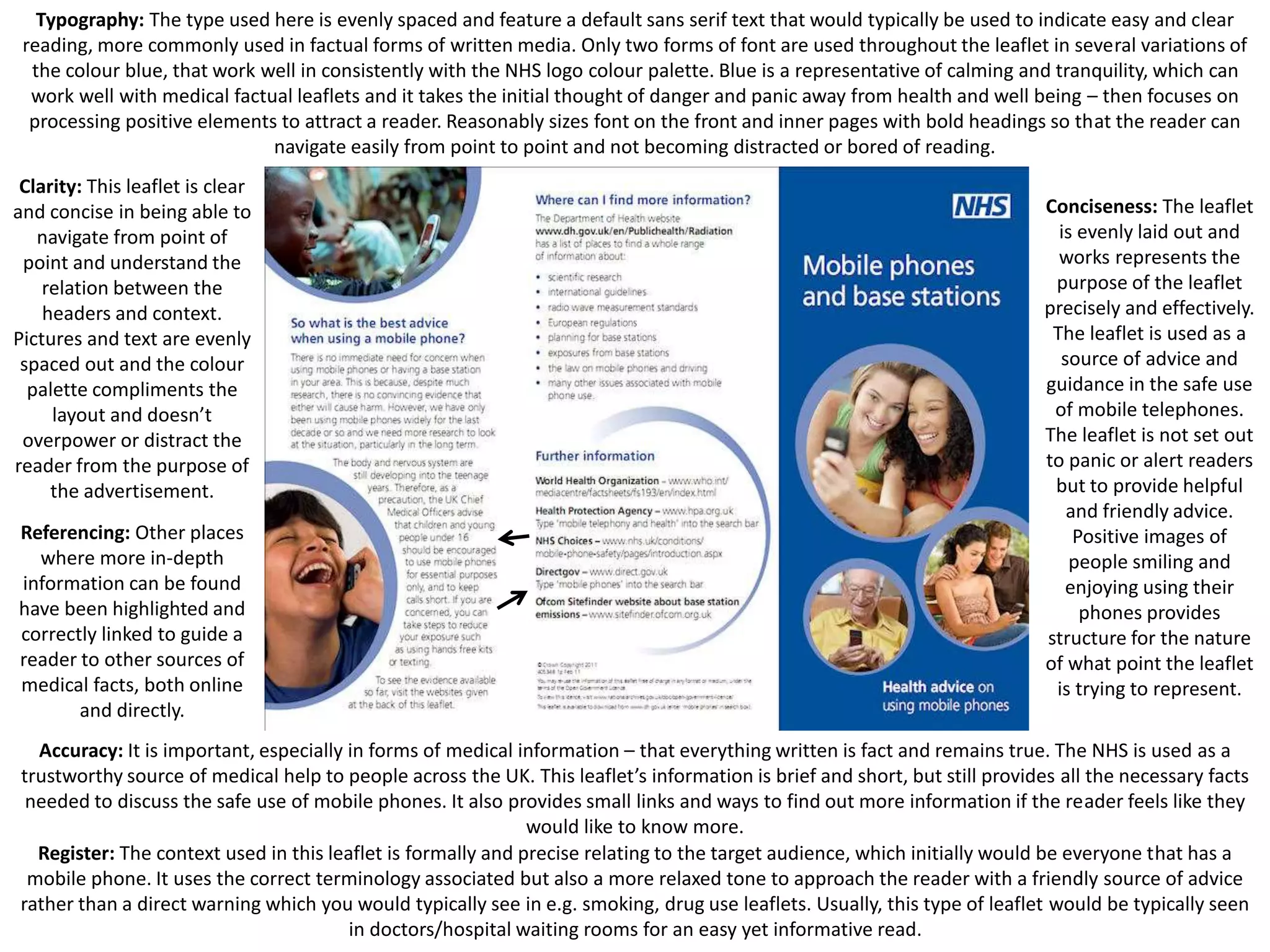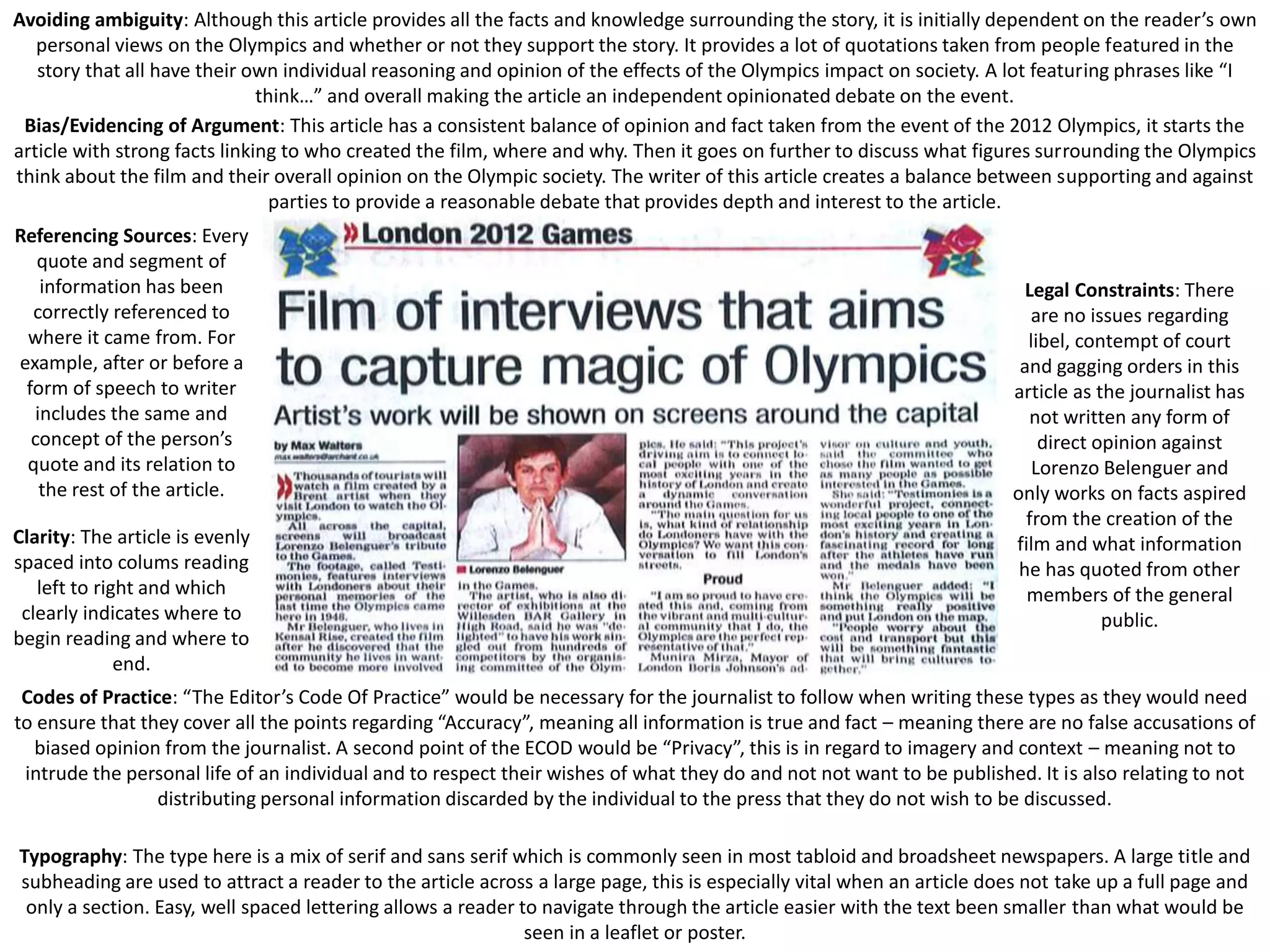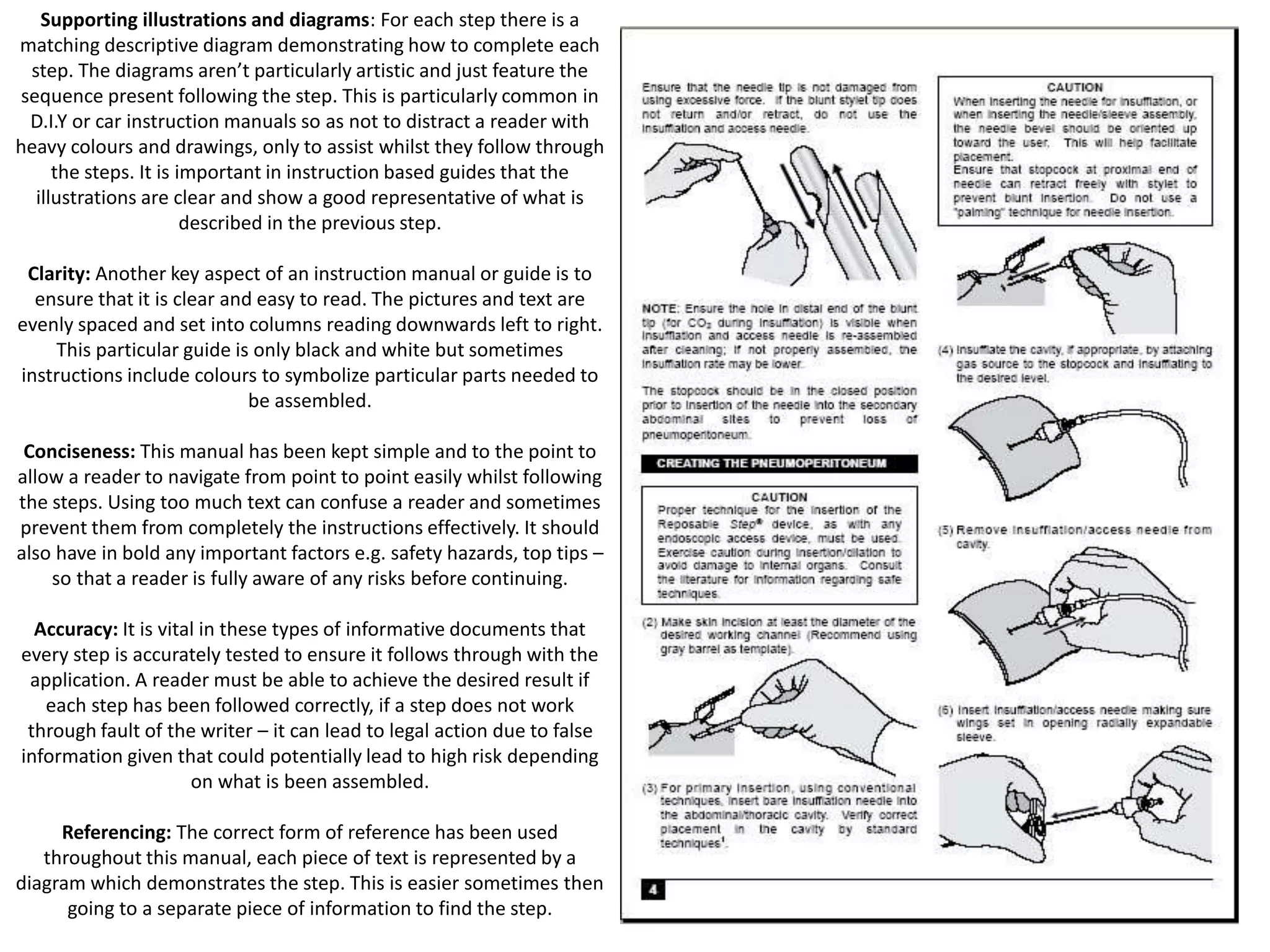The document discusses the typography, layout, and design elements used in an NHS informational leaflet. It notes that a sans serif font is used to indicate clear reading and that only two fonts are used throughout in variations of blue, which works well with the NHS color palette and conveys calmingness. Reasonably sized fonts are used on front and inner pages with bold headings to help the reader navigate. Pictures and text are evenly spaced and don't distract from the purpose of providing information. References to other sources of information are also included to guide readers.



